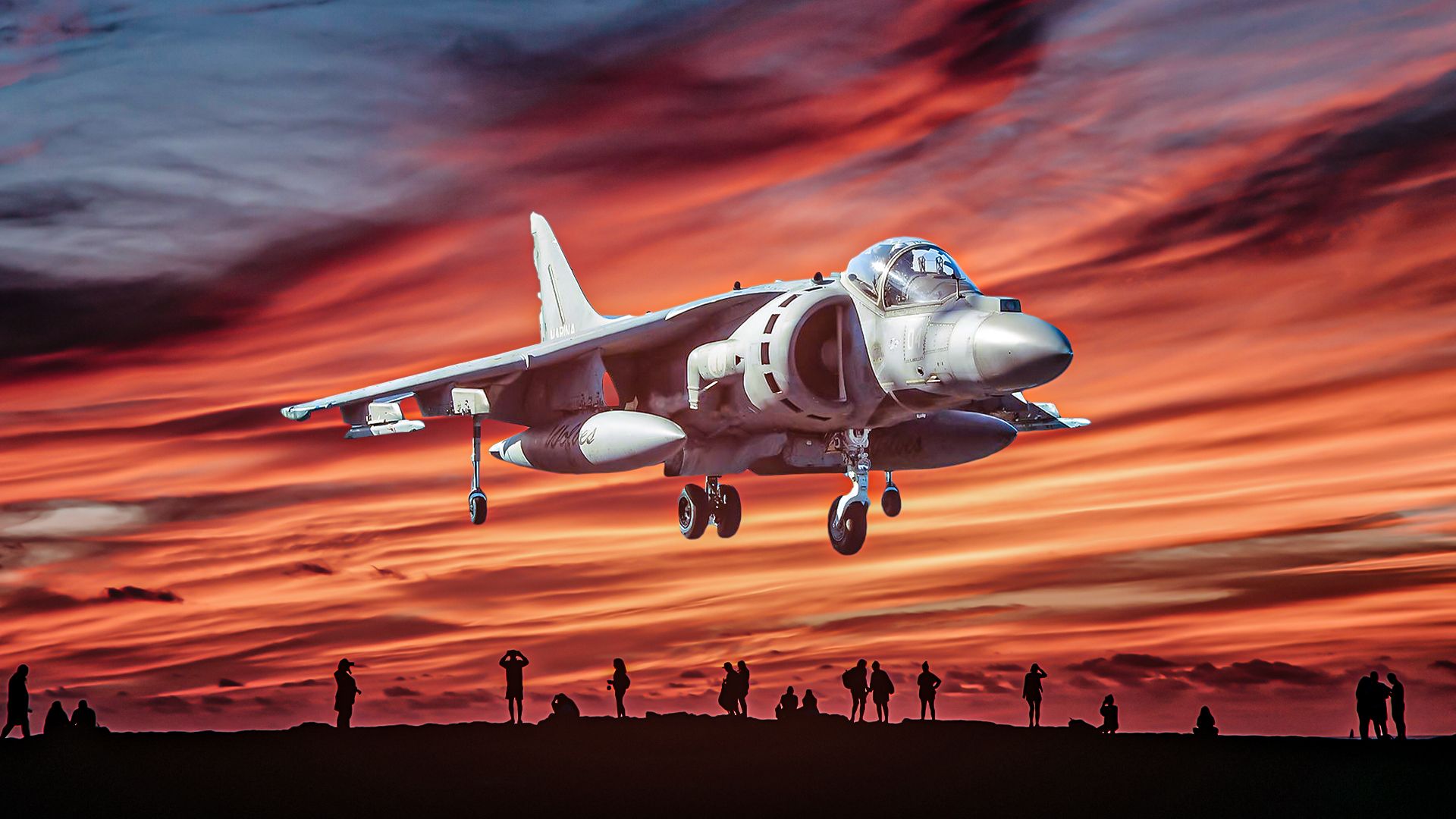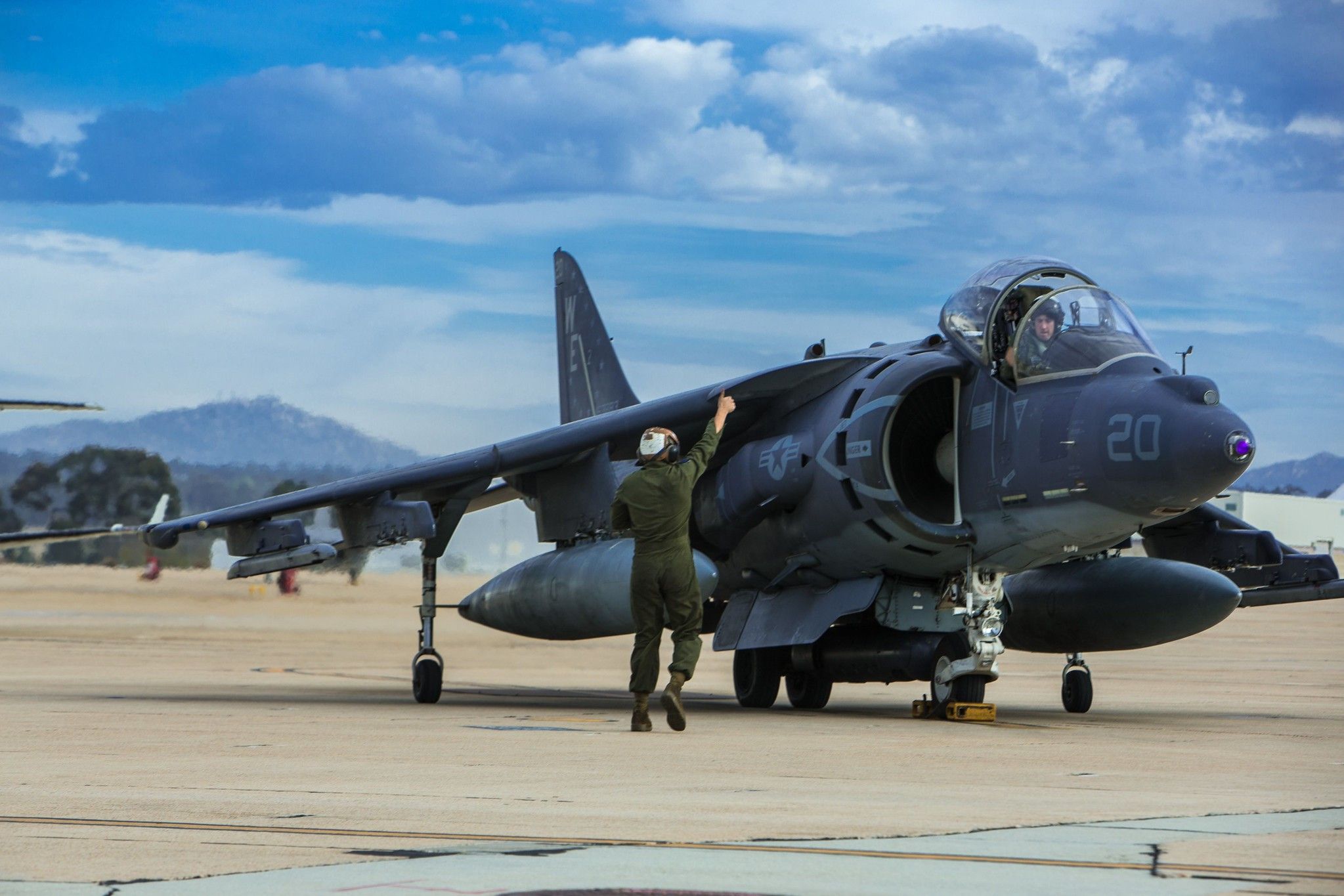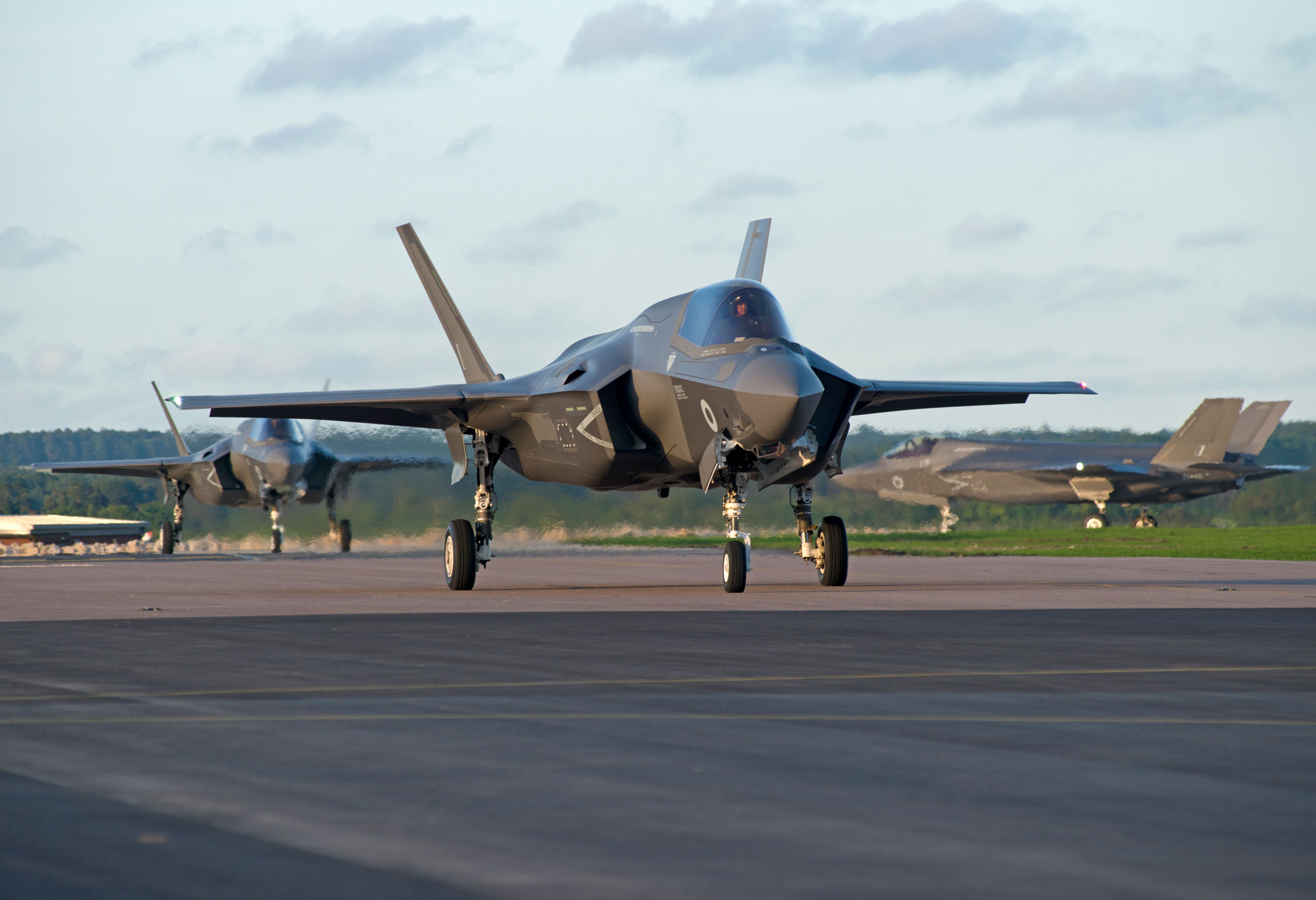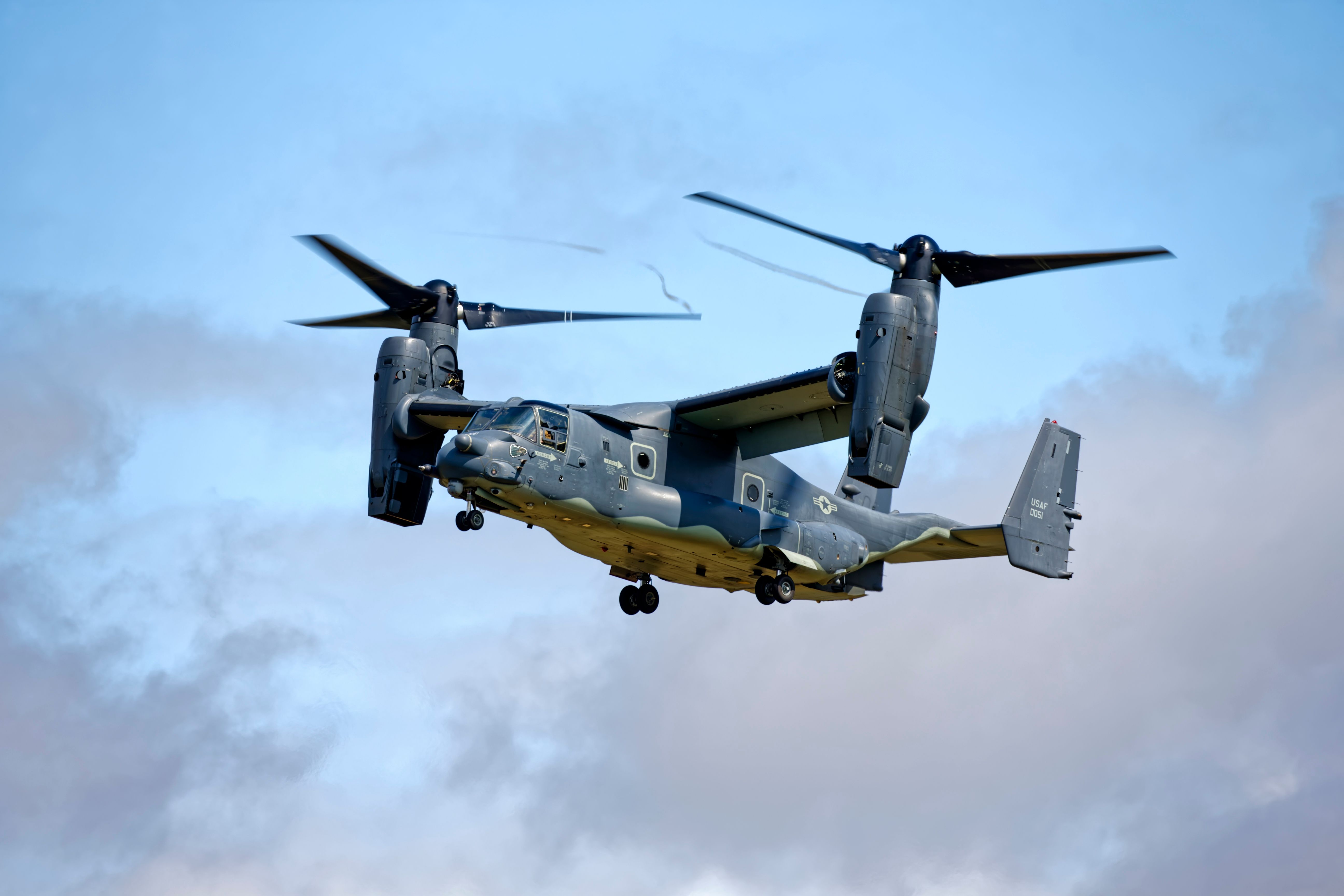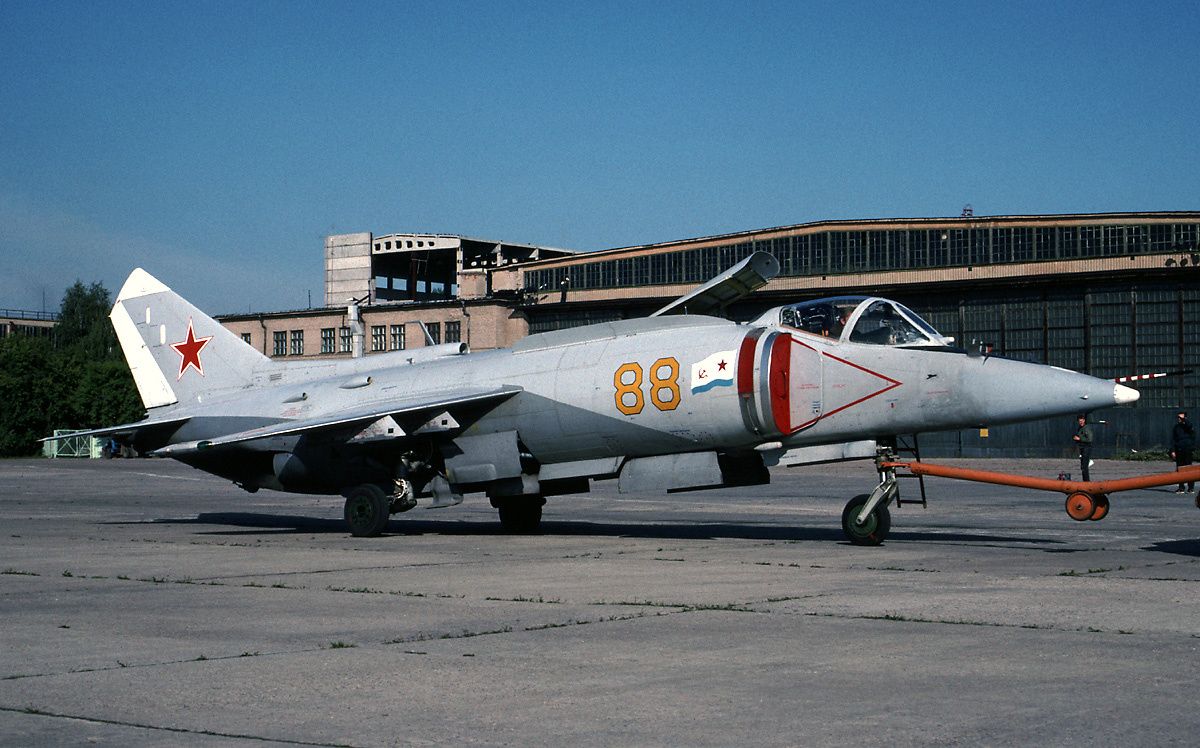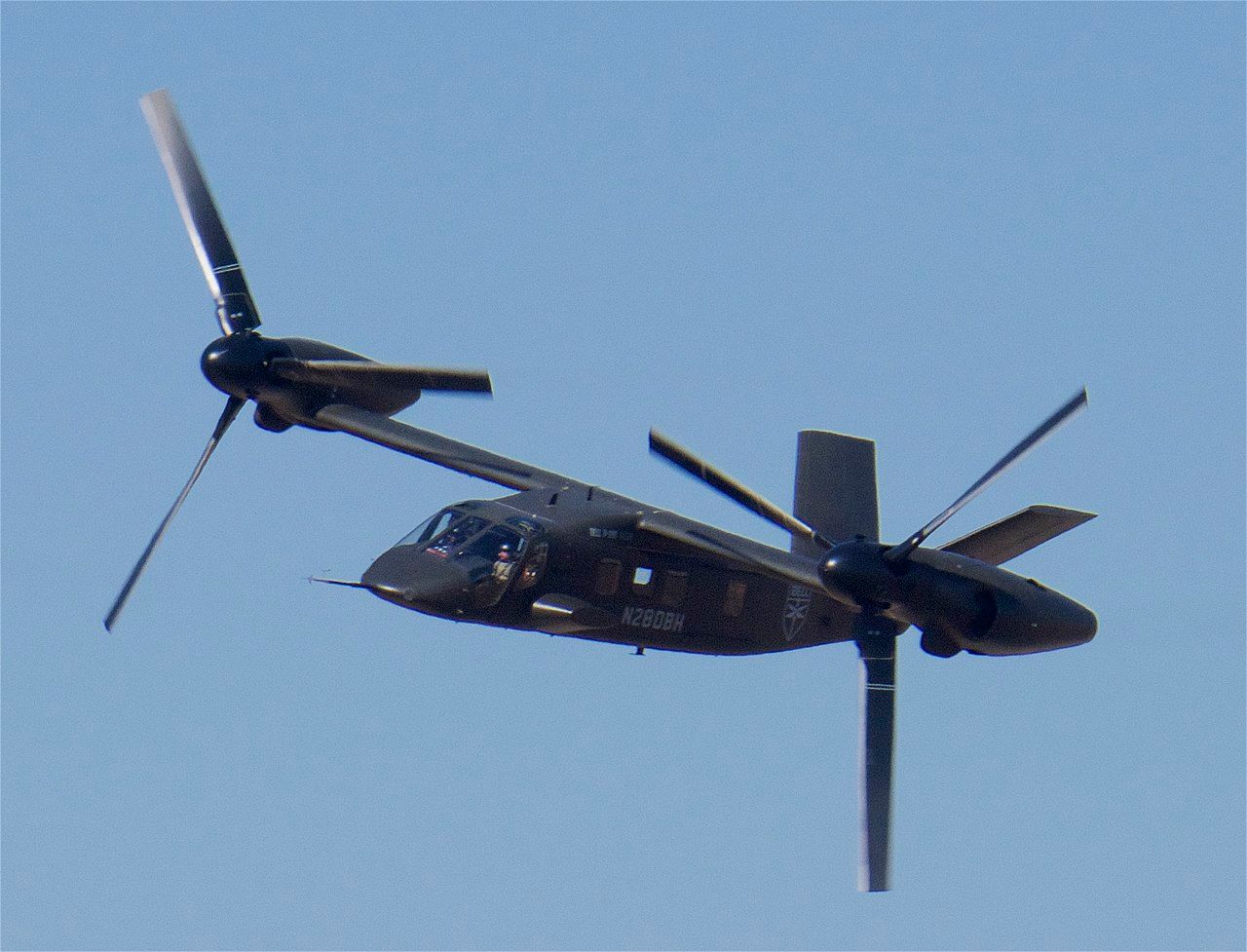Summary
- AV-8B Harrier II has combat efficiency with vertical takeoff and landings due to its aircraft design.
- The F-35B Lightning II boasts supersonic speeds and STOVL capability for various missions.
- V-22 Osprey combines helicopter capabilities with high-speed cruise operations for adaptable use.
As the name suggests, a vertical takeoff and landing (VTOL) aircraft can become airborne or land vertically without the use of a runway strip. While helicopters are designed for vertical operations, the VTOL classification is only limited to airplanes that can achieve lift in forward flight. Such aircraft have increased combat efficiency through a lower response time.
1
AV-8B Harrier II
Status: In service
- Length: 46 ft 4 in (14.12 m)
- Wingspan: 30 ft 4 in (9.25 m)
- Height: 11 ft 8 in (3.55 m)
-
Maximum takeoff weight:
- Rolling takeoff: 31,000 lb (14,100 kg)
- Vertical takeoff: 20,755 lb (9,415 kg)
- Powerplant: 1 × Rolls-Royce Pegasus F402-RR-408 (Mk 107) vectored-thrust turbofan, 23,500 lbf (105 kN) thrust
- Maximum speed: 585 kn (673 mph, 1,083 km/h)
- Combat range: 300 NM (350 mi, 556 km)
The McDonnell Douglas AV-8B Harrier II is a single-engine combat aircraft primarily deployed on multi-role close air support missions. Originally designed and developed in the late 1970s, the AV-8B performed its first flight in November 1981 and entered service with the United States Marine Corps (USMC) in January 1985. The Harrier II was developed for the British Military.
Retaining the basic design and airframe layout of the Hawker Siddeley Harrier, the AV-8B Harrier II is powered by a single Rolls-Royce Pegasus F402-RR-408 (Mk 107) vectored-thrust turbofan, generating 23,500 lbf (105 kN) thrust. The aircraft can carry a large number of armaments, including rockets, missiles, and bombs, in its six underwing pylon hardpoints and a single under-fuselage station.
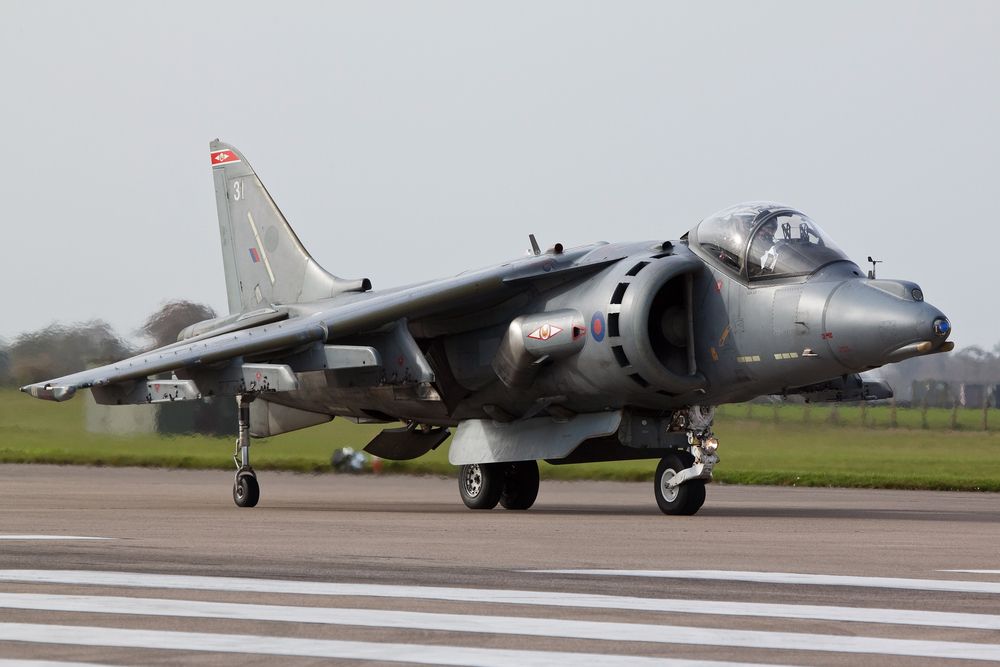
Related
Do Any Air Forces Still Use The Hawker Harrier Jet?
The versatile multi-role fighter aircraft is being phased out but will be around until 2030.
2
F-35B Lightning II
Status: In-service and in production
- Length: 51ft 2¼in (15.60m)
- Height: 14ft 3½in (4.36m)
- Wingspan: 35ft (10.70m)
- Maximum take-off weight: around 60,000lb (27,216kg)
- Powerplant: one Pratt & Whitney F135 turbofan rated at 40,000lb st (177.88kN) with afterburning and 40,500lb st (180.10kN) for vertical take-off
- Maximum speed: Mach 1.6
- Maximum altitude: 50,000ft
- Armament: typically two AAMs and two bombs carried internally, with optional underwing pylons enabling stores to carry up to 15,000lb (6,800kg)
The F-35B Lightning II needs no introduction. This VTOL-capable combat aircraft is one of three variants of the Lockheed Martin F-35. Designed for air superiority and strike missions, the F-35B was introduced to the service with the USMC in July 2015.
Photo: Peter R Foster IDMA I Shutterstock
According to Lockheed Martin,
“The F-35B is the first-ever supersonic, radar-evading stealth aircraft with short takeoff/ vertical landing (STOVL) capability, giving it the unique capability to operate from a variety of ships, roads and austere bases near frontline combat zones. STOVL operation is made possible through a patented shaft-driven LiftFan® propulsion system. This propulsion approach overcomes many of the temperature, velocity and power challenges of direct-lift systems.”
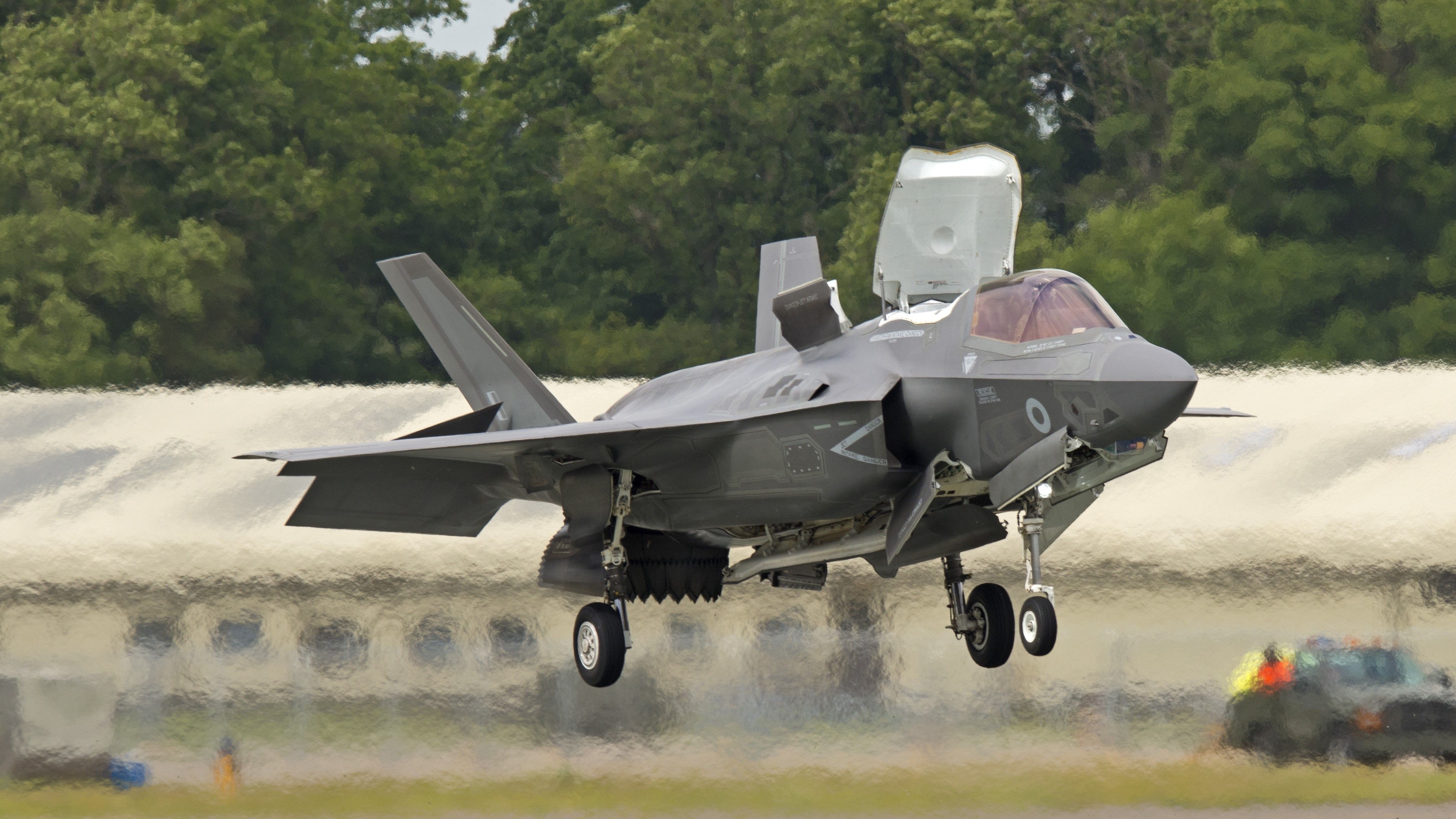
Related
Examined: The Lockheed Martin F-35B Lightning II’s Short Takeoff & Vertical Landing Capabilities
This military jet was the first one to match supersonic speeds with STOVL capabilities.
Lockheed Martin has produced more than 1,000 examples of the F-35 across all variants since 2006. The US military aims to operate its F-35 jets well into the 2050s.
3
V-22 Osprey
Status: In-service and in production
- Length: 57 ft 4 in (17.48 m) Length folded: 62 ft 7.6 in (19.091 m)
- Wingspan: 45 ft 10 in (13.97 m)
- Width: 84 ft 6.8 in (25.776 m) including rotors
- Width folded: 18 ft 5 in (5.61 m)
- Height: 22 ft 1 in (6.73 m) engine nacelles vertical;
- Height folded: 18 ft 1 in (5.51 m)
- Maximum take-off weight VTO: 47,500 lb (21,546 kg)
- Powerplant: 2 × Rolls-Royce T406-AD-400 turboprop/turboshaft engines, 6,150 hp (4,590 kW) each
- Maximum speed: 275 kn (316 mph, 509 km/h)
- Combat range: 390 NM (450 mi, 720 km)
- Service ceiling: 25,000 ft (7,600 m)
The Bell Boeing V-22 Osprey is a multi-role tiltrotor aircraft capable of both the VTOL and Short Takeoff and Landing (STOL) operations. The aircraft was designed to combine the capabilities of a helicopter with a high-speed cruise operation. Entered service in June 2007 with the USMC, the partnership program between Boeing Helicopters and Bell Helicopters has produced more than 400 examples of the type.
Photo: Andrew Harker | Shutterstock
According to Bellflight.com,
“For more than 30 years, the V-22 Osprey has fundamentally changed how the U.S. Marine Corps, Air Force and now Navy operate in combat and humanitarian operations. With a fleet of over 400+ aircraft accumulating more than 600,000 flight hours, the Bell Boeing V-22 Osprey continues to prove it’s one of the most versatile and reliable aircraft for our customers and national security around the globe.”
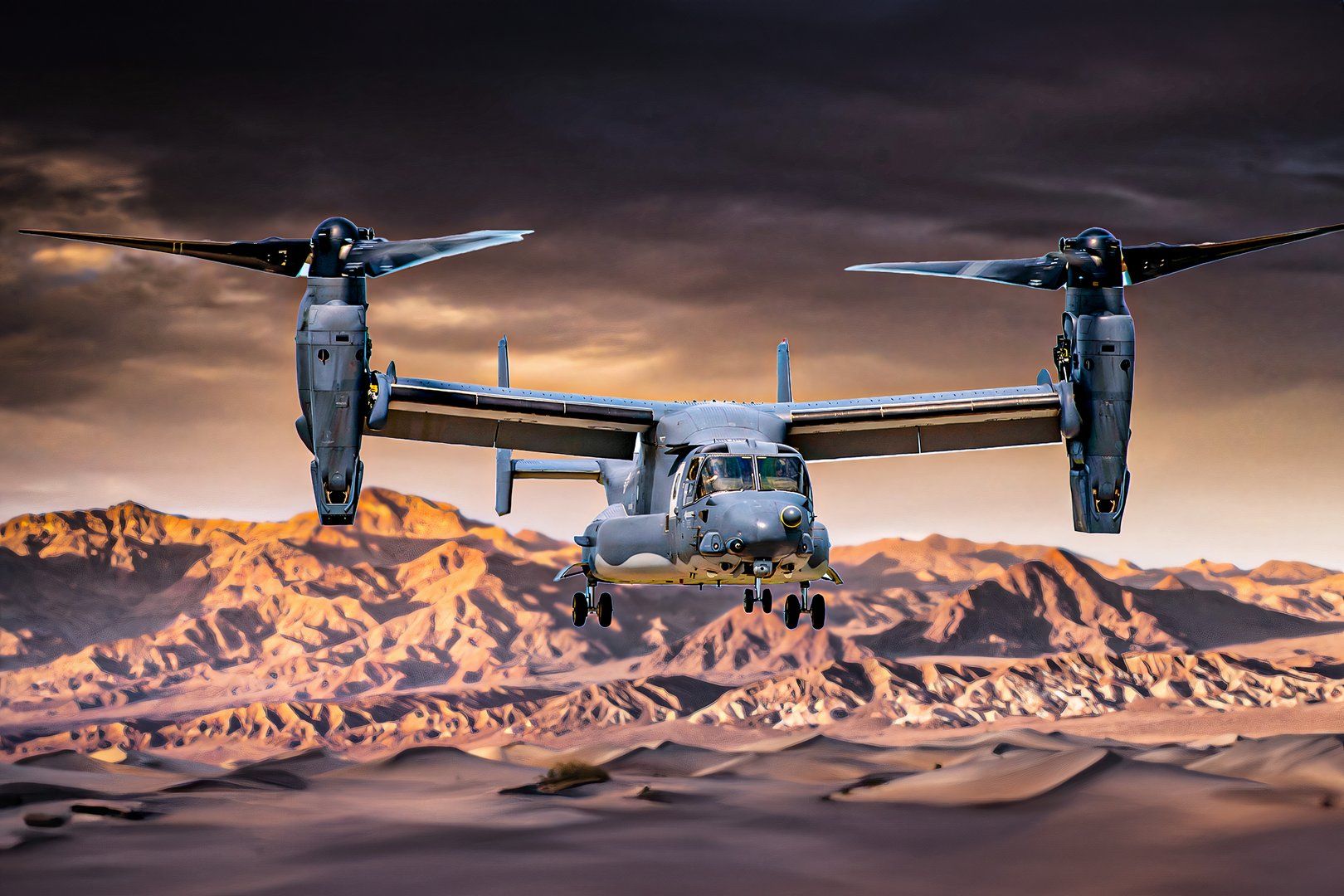
Related
Is The V-22 Osprey A Helicopter Or A Plane?
The aircraft has characteristics of both.
4
Yak-38
Status: Retired
- Length: 16.37 m (53 ft 8 in)
- Wingspan: 7.32 m (24 ft 0 in)
- Height: 4.25 m (13 ft 11 in)
- Wing area: 18.5 m2 (199 sq ft)
- Empty weight: 7,385 kg (16,281 lb)
- Max takeoff weight: 11,300 kg (24,912 lb)
- Powerplant: 1 × Tumansky R-28 V-300 Vectored-thrust turbofan engine, 66.7 kN (15,000 lbf) thrust for lift and cruise thrust
- Powerplant: 2 × Rybinsk (RKBM) RD-38 turbojet engines, 31.9 kN (7,200 lbf) thrust each lift-jets
- Maximum speed: 1,280 km/h (800 mph, 690 kn)
- Range: 100 km (62 mi, 54 NM)
- Service ceiling: 11,000 m (36,000 ft)
The Yakovlev Yak-38 was a Soviet Union aircraft designed by Yakovlev in the late 1960s. Performing its first flight in January 1971, the Yak-38 entered service with the Soviet Naval Aviation in August 1976. The aircraft marked the only operational strike fighter for the Soviet Naval Aviation. The manufacturer produced 231 examples of the Yak-38 between 1975 and 1981.
Apart from the first production model, two major variants made it to the market; the Yak-38M and Yak-38U. The -38M featured newer engines and a greater maximum takeoff weight. It could also carry an additional 2,000 lb (910 kg) of weapons. The -38U was the two-seat training version with a widened fuselage to accommodate two pilots.
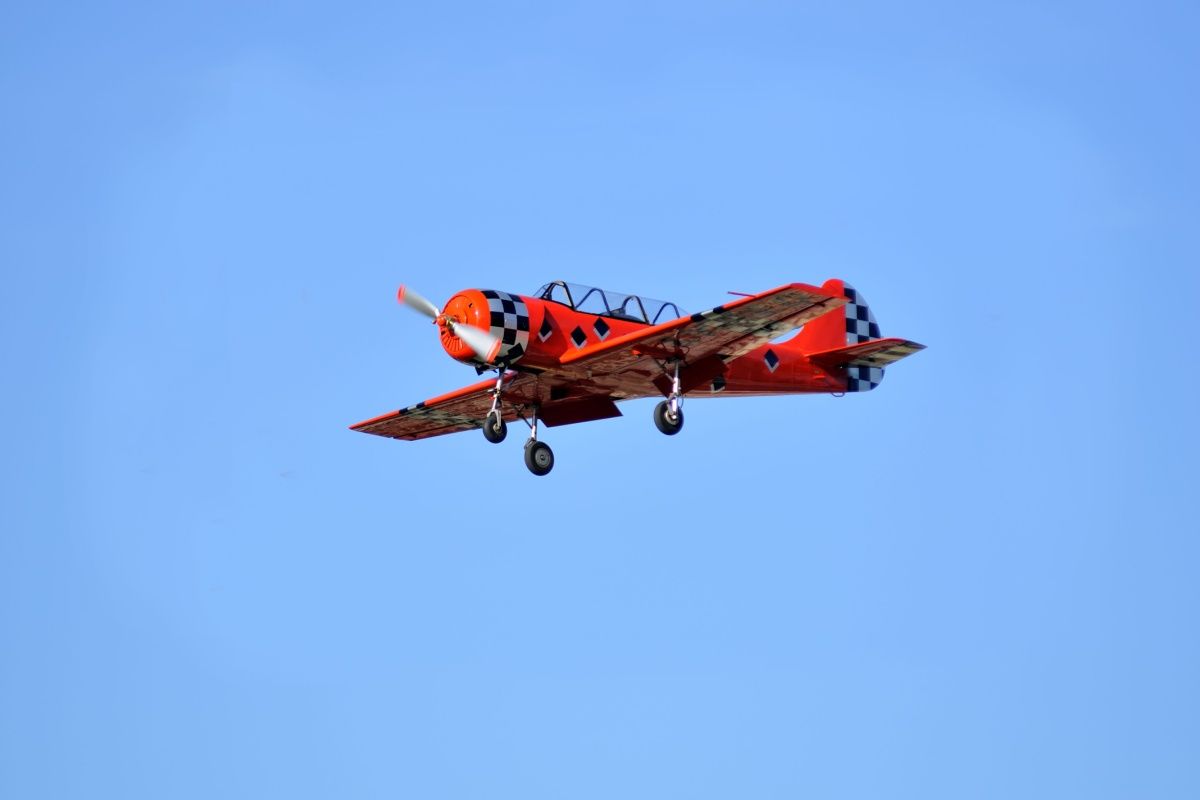
Related
Spanish Pilot “Coco” Rey Killed As 2 Yakolev Yak-52 Collide Midair At Portuguese Air Show
One Yak-52 crashes, and another makes an emergency landing following a fatal midair collision.
5
Bell V-280 Valor
Status: Under development
- Length: 50.5 ft (15.4 m)
- Width: 81.79 ft (24.93 m)
- Height: 23 ft 0 in (7 m)
- Max takeoff weight: 30,865 lb (14,000 kg)
- Powerplant: 2 × Rolls-Royce AE1107 turboshaft
- Cruise speed: 320 mph (520 km/h, 280 kn)
- Combat range: 580–920 mi (930–1,480 km, 500–800 NM)
- Service ceiling: 6,000 ft (1,800 m); in hover out of ground effect at 95 °F (35 °C)
The future long-range assault aircraft (FLARA) is currently under development by Bell Helicopters for the United States Army. In 2022, the Army selected the V-280 for the FLARA program to replace the Sikorsky UH-60 Boack Hawk.
According to Bell Helicopters,
“Purpose-built to revolutionize the reach and effectiveness of each mission while offering unmatched maneuverability, reduced downtime and elevated mission safety. With over twice the speed and range as current weapons systems, FLRAA is the proven long-range maneuver solution.”
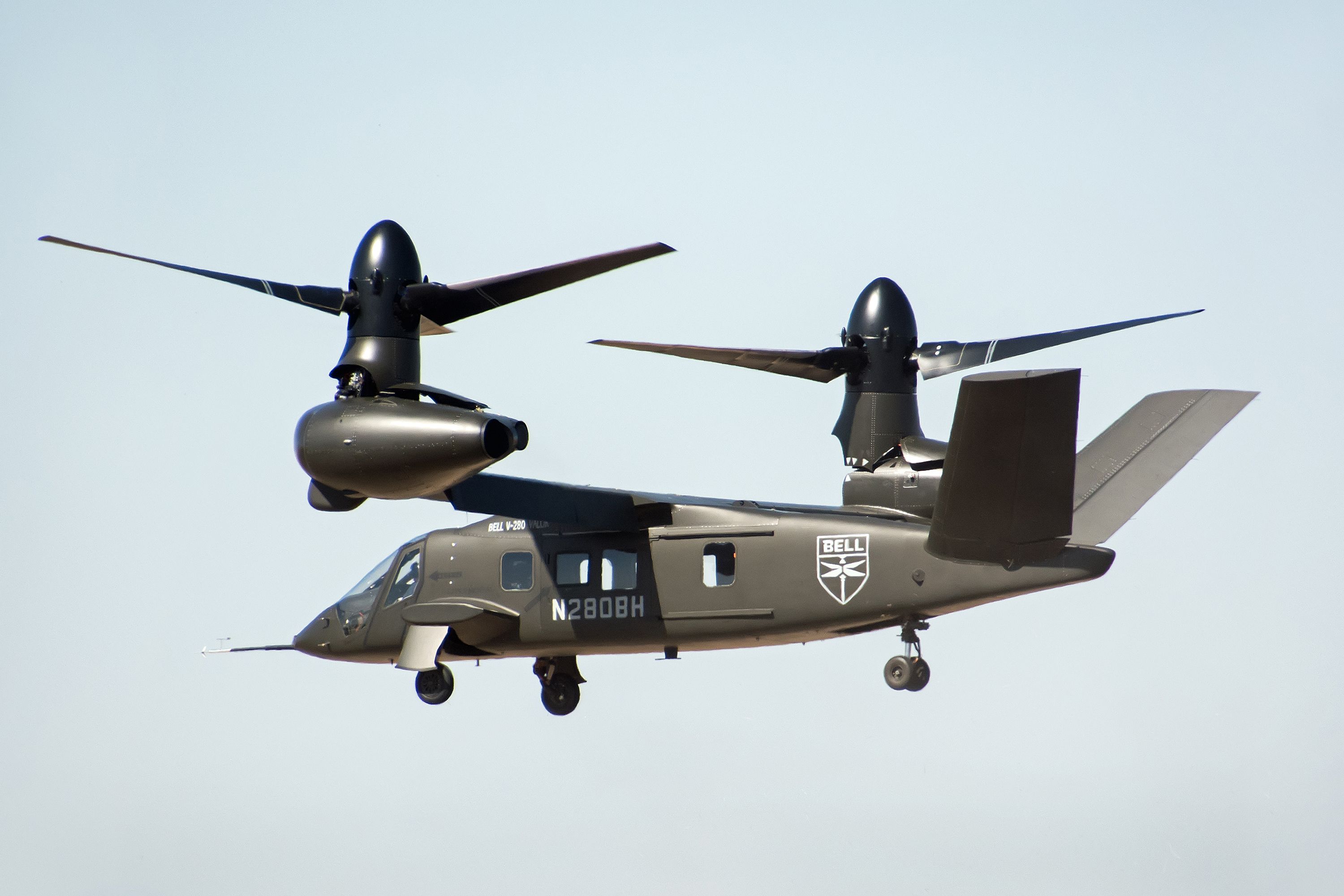
Related
The Bell V280 Valor: Everything You Need To Know
Its rotors and driveshafts tilt while the engines remain in position.
The first few aircraft are planned to go into the testing phase in 2025-2026, with the entry into service planned for 2031.
What are your thoughts on the top VTOL aircraft? Share your views in the comments section.

